#central france
Explore tagged Tumblr posts
Text

Rural street scene in Saint-André-de-Corcy, Dombes region of France
French vintage postcard
#historic#street#rural#photography#vintage#sepia#france#saint#central#photo#briefkaart#corcy#french#ansichtskarte#saint-andré-de-corcy#postcard#central france#postkarte#postkaart#carte postale#ephemera#postal#scene#tarjeta#andr
4 notes
·
View notes
Text
The folklore of the Berry region: Fades and Ladies
Loosely translated from A. Laisnel de La Salle’s “Croyances et légendes du coeur de la France”, “Beliefs and legends of the center of France”, 1875.
Article: Les Fades
The word “fade” is the one by which fairies are called in central France - it is part of the “langue d’oc” (note of the translator - me -, the language of oc is one of the two “main” languages of France all the way up to the end of the Middle-Ages, which characterized southern France - modern French comes from the northern “langue d’oïl”). And “fade” is merely the langue d’oc word for “fairy”, what the langue d’oïl calls “fée”. Fade comes from the latin “fata”, which was a common name for the Parcae (it links it all to the fairies of Italy, who are called “fatas”). The Fades usually live in the countrysides adjacent to the Indre river’s tributaries. They have mores and tastes very different from the ones of the Martes (note of the translator - me - another legendary entity I might translate the article of later): peaceful and sweet, the Fades like typically rural activities and enjoy a pastoral form of life.
The parish of Notre-Dame-de-Pouligny kept alive the story of one of those fairies, who was living in a grotto called the “Trou aux Fades” (Hole of the Fades). This fade spent all of her time taking care of the sheep of the Bos domain: every day she took them to the field, and every night she made sure they came home safely. She took such a good care of the animals that farm workers stopped doing their jobs - since she was doing it for them. Thanks to her, the flock was growing - she was a true benediction. Each female sheep gave birth, at least, to two lambs each, and when it was time to shave the sheep, each one produced at ten pounds of wool - and wool of the finest quality, thinner and whiter than any other wool! But this centuries-old prosperity stopped abruptly one day, by an extraordinary event. One Christmas Eve, as the lady of the Bos domain was going to the midnight mass of Pouligny-Notre-Dame, when she returned she approached the crib of her youngest child. It was a child as beautiful as day, and young enough to still be breast-fed - the child was sleeping when she went to the mass, and she decided to breastfeed him at her return... Only to scream as her baby bit her breast. Light was brought, and instead of the pink and chubby baby, the lady and her servants discovered a hairy, skinny, screaming creature, which jumped at the face of anyone that dared to approach him. The story stops here - we do not know what happened to the little monster, nor where the true son of the lady of the domain went - but what is known is that, ever since this evet, the fade stopped living in the Bos domain, since every accused her (and everybody accuses her still) of having caused this baby-swapping.
Article: Dames, Bonne-Dames et Demoiselles
The Dames (Ladies) or Bonnes-Dames (Good-Ladies), and the Demoiselles (Maidens) are not very different from the Fades - in fact it can be argued they might be one and the same. The Dames and Demoiselles usually live in plains, enjoying the shadow under old oak trees, the green grass of the meadows, and the fountains. Numerous areas, in the countryside surrounding La Châtre, are amed things such as “pré à la Dame” (the pasture of the Lady) or “champ de la Dame” (field of the Lady). We also find things such as “fontaine à la Dame”, “the fountain of the Lady” or “l’Effe à la Dame”, a regional version of “L’étang à la Dame” - “The pond of te Lady”.
In the Lacs parish, old spinner women spoke of the Dame de la Font Chancela (Lady of the Font Chancela), who was known to appear under the moonlight on a meadow near to the Font Chancela fountain - a meadow still called “Pré à la Dame”, “Meadow of the Lady”. The Lady of Font Chancela was said to be incredibly beautiful, and a local lord fell in love with her. Many times he managed to capture her during her nocturnal apparitions - but each time he placed her on the back of his horse, to bring her back to his manor, she melted away between his arms - literaly melting away - and left him with such a feeling of deep and permanent cold that all the fires of love in his heart died out... as least for a whole years, before his love for the lady was again set ablaze and he tried to ravish her again. It is said that the Lady of Font Chancela is quite a prudish fairy, and very easy to vex. If you ever end up near the cold spring of the Font Chancela, during a hot summer day, and if you ever take some water out of it, beware to not say anything about the water being too cold - else the Dame might make you lose the ability to speak like a human being, and curse you to bark like a dog for the rest of your life. In fact, many things extraordinary are said to regularly happen around the Font Chancela fountain.
The Chaumoi de Montlevic is known as an area crossed by two main paths - one going north-south, the other east-west. Near the crossroad where those paths meet, there is a patch of land known as “le champ de la Demoiselle” (the field of the Maiden). It is sad that, at night, from everywhere around the countryside, you can see there a giant woman, who keeps growing taller and taller the closer you get to her, without ever moving.
In the east of the Berry region, around the Bourbonnais, it is said that the fairies are more powerful during certain days than during others. The 1st of May is said to be one of those “days of powers” - but it is on the night of the 1st of May that the fairies decide to “rousiner”. Rousiner is a verb meaning here that they clean away the dew out of some meadows with their long white dresses - such a process makes the meadow sterile. It is also said that the fairies were able to cause harm to the harvest and to the vintage by merely breathing on it - but given the villagers of the area knew very well the dates of these dangerous times, they also made sure, as the fairies arrived, to lit up great bonfires in the field. They wandered the meadows beating up the air with long poles, and they used rifles to shoot around - all of this to keep away malevolent spirits. But not all fairies were as negative as those ones. Some, on the contrary, were known to bring fertility and abundance to the places they frequented. The best meadows and pastures were said to be where the Dames played and danced. The places where they like to promenade and dance in circles can be easily identified: they have capricious meanders, orbs are seen covering a very fresh and very rich grass, and often mousseron (a “rival” of the truffe mushroom) grow spontaneously in these places. It is believed in numerous places that the mysterious circles (formed by the footsteps of fairies during nocturnal dances) are sanctuaries: as such, if you are under a threat, for example hunted by malevolent beasts, attacked by a devil, or any other kind of wicked spirit, you can take refuge in one of those fairies circles.
5 notes
·
View notes
Text
A central element of the myth of [Eleanor of Aquitaine] is that of her exceptionalism. Historians and Eleanor biographers have tended to take literally Richard of Devizes’s conventional panegyric of her as ‘an incomparable woman’. She is assumed to be a woman out of her time. […] Amazement at Eleanor’s power and independence is born from a presentism that assumes generally that the Middle Ages were a backward age, and specifically that medieval women were all downtrodden and marginalized. Eleanor’s career can, from such a perspective, only be explained by assuming that she was an exception who rose by sheer force of personality above the restrictions placed upon twelfth-century women.
— Michael R. Evans, Inventing Eleanor: The Medieval and Post-Medieval Image of Eleanor of Aquitaine
The idea of Eleanor’s exceptionalism rests on an assumption that women of her age were powerless. On the contrary, in Western Europe before the twelfth century there were ‘no really effective barriers to the capacity of women to exercise power; they appear as military leaders, judges, castellans, controllers of property’. […] In an important article published in 1992, Jane Martindale sought to locate Eleanor in context, stripping away much of the conjecture that had grown up around her, and returning to primary sources, including her charters. Martindale also demonstrated how Eleanor was not out of the ordinary for a twelfth-century queen either in the extent of her power or in the criticisms levelled against her.
If we look at Eleanor’s predecessors as Anglo-Norman queens of England, we find many examples of women wielding political power. Matilda of Flanders (wife of William the Conqueror) acted as regent in Normandy during his frequent absences in England following the Conquest, and [the first wife of Henry I, Matilda of Scotland, played some role in governing England during her husband's absences], while during the civil war of Stephen’s reign Matilda of Boulogne led the fight for a time on behalf of her royal husband, who had been captured by the forces of the empress. And if we wish to seek a rebel woman, we need look no further than Juliana, illegitimate daughter of Henry I, who attempted to assassinate him with a crossbow, or Adèle of Champagne, the third wife of Louis VII, who ‘[a]t the moment when Henry II held Eleanor of Aquitaine in jail for her revolt … led a revolt with her brothers against her son, Philip II'.
Eleanor is, therefore, less the exception than the rule – albeit an extreme example of that rule. This can be illustrated by comparing her with a twelfth century woman who has attracted less literary and historical attention. Adela of Blois died in 1137, the year of Eleanor’s marriage to Louis VII. […] The chronicle and charter evidence reveals Adela to have ‘legitimately exercised the powers of comital lordship’ in the domains of Blois-Champagne, both in consort with her husband and alone during his absence on crusade and after his death. […] There was, however, nothing atypical about the nature of Adela’s power. In the words of her biographer Kimberley LoPrete, ‘while the extent of Adela’s powers and the political impact of her actions were exceptional for a woman of her day (and indeed for most men), the sources of her powers and the activities she engaged in were not fundamentally different from those of other women of lordly rank’. These words could equally apply to Eleanor; the extent of her power, as heiress to the richest lordship in France, wife of two kings and mother of two or three more, was remarkable, but the nature of her power was not exceptional. Other noble or royal women governed, arranged marriages and alliances, and were patrons of the church. Eleanor represents one end of a continuum, not an isolated outlier.
#It had to be said!#eleanor of aquitaine#historicwomendaily#angevins#my post#12th century#gender tag#adela of blois#I think Eleanor's prominent role as dowager queen during her sons' reigns may have contributed to her image of exceptionalism#Especially since she ended up overshadowing both her sons' wives (Berengaria of Navarre and Isabella of Angouleme)#But once again if we examine Eleanor in the context of her predecessors and contemporaries there was nothing exceptional about her role#Anglo-Saxon consorts before the Norman Conquest (Eadgifu; Aelfthryth; Emma of Normandy) were very prominent during their sons' reigns#Post-Norman queens were initially never kings' mothers because of the circumstances (Matilda of Flanders; Edith-Matilda; and#Matilda of Boulogne all predeceased their husbands; Adeliza of Louvain never had any royal children)#But Eleanor's mother-in-law Empress Matilda was very powerful and acted as regent of Normandy during Henry I's reign#Which was a particularly important precedent because Matilda's son - like Eleanor's sons after him - was an *adult* when he became King.#and in France Louis VII's mother Adelaide of Maurienne was certainly very powerful and prominent during Eleanor's own queenship#Eleanor's daughter Joan's mother-in-law Margaret of Navarre had also been a very powerful regent of Sicily#(etc etc)#So yeah - in itself I don't think Eleanor's central role during her own sons' reigns is particularly surprising or 'exceptional'#Its impact may have been but her role in itself was more or less the norm
425 notes
·
View notes
Text

Eugène Delaplanche (French, 1836-1891) Musiciennem, ca.1877-78 Ny Carlsberg Glyptotek, Copenhague
#I have genetic dimples of venus#my family is from southern and central and northern europe#do you have natural venus dimples? where are you from?#Eugène Delaplanche#french art#french#france#Musician#1800s#art#fine art#european art#classical art#europe#european#fine arts#europa#mediterranean#venus dimples#dimples of venus#Musiciennem#sculpture#copenhague#copenhagen
562 notes
·
View notes
Text

he is so shittyprince 'i'll allow it' 'joust for my amusement'-coded. someone get him a goblet of mead, immediately
#i say it's interesting kills me everytime#rejected adendums to this included#we invade france at dawn#will be beheaded by robespierre#let them eat cake#etc#yugioh#yugioh manga#ygo#seto kaiba#my scorpio son#welcome to shitpost central
81 notes
·
View notes
Text

Sancy
#Vertical#Outdoors#Photography#Snow#Winter#Cold Temperature#Landscape - Scenery#Nature#Mountain#Sky#Scenics - Nature#Two People#Cloud - Sky#Day#Beauty In Nature#sancy#puy de dome#massif central#auvergne#france#europe
23 notes
·
View notes
Text

Trump Weird News - Diplomat-In-Chief? Update
#weird news#trump#donald trump#trump 2024#kamala harris#kamala#harris#weird#harris 2024#harris walz 2024#diplomat-in-chief#diplomat#handshake#nato#central park 5#stand back and stand by#ireland#england#scotland#germany#france#australia#argentina#spain#switzerland
20 notes
·
View notes
Text






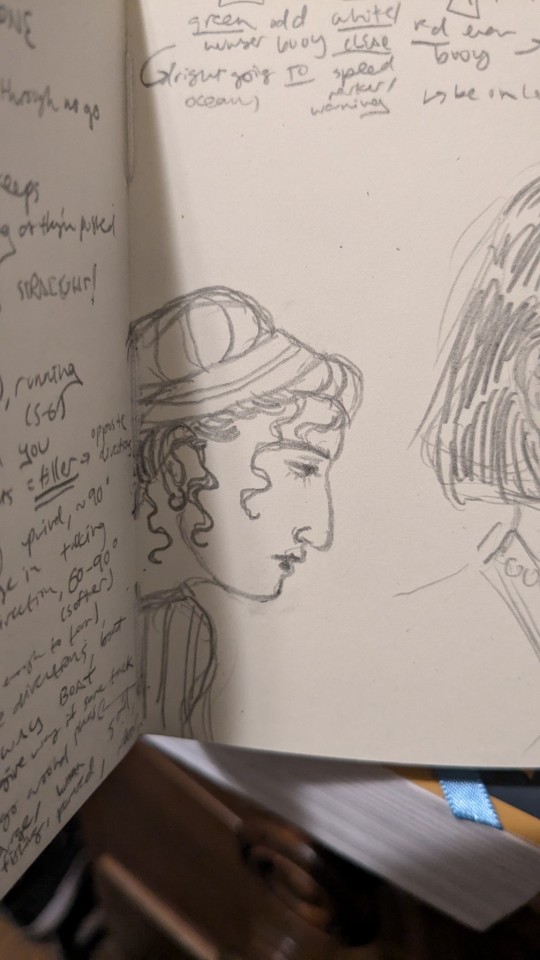

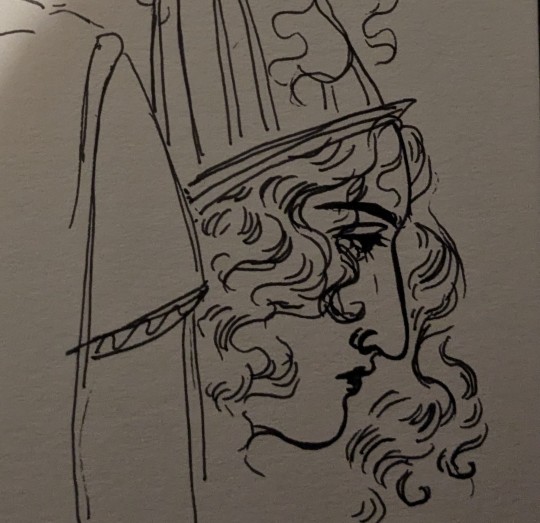
Comprehensive everything I've drawn (no non-lazy things I fear) in the last like 6 months compilation!!!! I love history
#charles vi#charles the vi of france#the mad king#guanyin#kannon#prince Siddhartha#buddhism#french history#medieval history#vasilisa the beautiful#slavic folklore#richard ii#hundred years war#lefty of poncho and lefty fame ..#cowboys..#early modern central india ocs for history class#historical ocs#my art
11 notes
·
View notes
Text
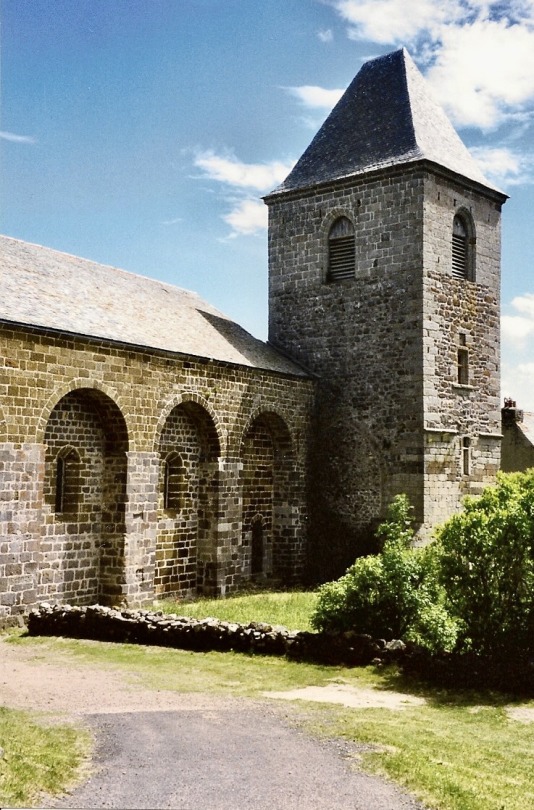
Église romane, Aubrac, 1999.
In the Massif Central, the village of Aubrac "straddles three départements (Cantal, Aveyron and Lozère) and three régions (Auvergne, Midi-Pyrénées and Occitanie)"
Bonne fête nationale!
#architecture#romanesque#church#aubrac#massif central#france#1999#photographers on tumblr#chemin st. jacques#camino santiago
11 notes
·
View notes
Text
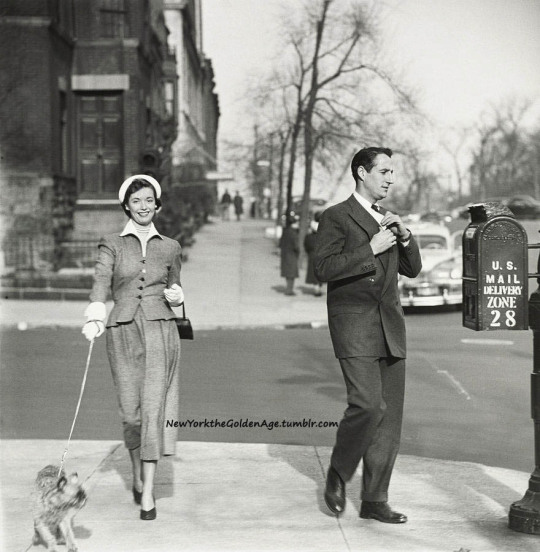
Mr. and Mrs. Stephen D. Calhoun, Jr. mailing a letter and walking the dog, 1949.
"Zone 28" on the mailbox refers to the part of the city they were in. It was a precursor to ZIP codes, which would incorporate zones into their numbers.
Photo: Frances McLaughlin-Gill via the Conde Nast Store
#vintage New York#1940s#Central Park West#Frances McLaughlin-Gill#walking dog#mailbox#postbox#mailing letter#postal zone#ZIP code#Upper West Side#vintage NYC
36 notes
·
View notes
Text

Rural scene in Central France, sheep homecoming to a farm
French vintage postcard
#french#briefkaart#farm#homecoming#sheep#carte postale#central france#france#postal#historic#ephemera#photo#postkarte#central#photography#sepia#vintage#ansichtskarte#tarjeta#rural#old#postcard#scene#postkaart
21 notes
·
View notes
Text
2 notes
·
View notes
Text
No. 42 - KLM Royal Dutch Airlines

Oh, don't worry. I think probably at least a third of the planes in the world are blue. I knew what I was getting into. And blue might be ubiquitous now, but it's hard to hold that against KLM. They're the oldest airline in the world, after all. I think they more or less get dibs.

That said, they also fall into a particular trend in blue planes which merits further examination. I mentioned it the first time in my Vietnam Airlines post - although each does it distinctly differently and they're difficult to mistake for each other, airlines keep deciding to make the bottom half of their plane white and the top half some sort of blue. Another example is Korean Air. I plan to cover several more of these in the near future, but I find the phenomenon fascinating. I have yet to coin a catchy name for it, and would appreciate suggestions, but it just keeps happening!
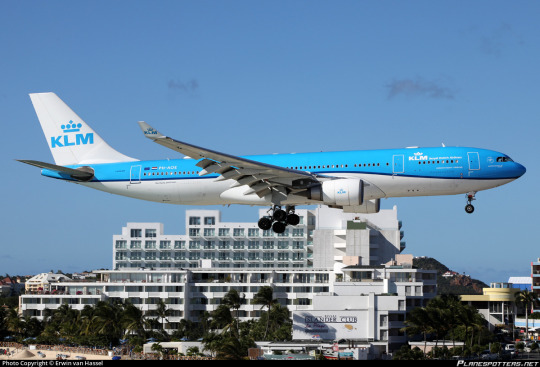
Well, okay. How does KLM distinguish itself among its blue counterparts? How well-designed is its livery in general? Does it live up to the gravitas its name tends to command? Is that crown earned? I think we can all agree that I am objectively the arbiter of these questions, so read on to see my answers.
It's not an exaggeration to say that KLM Royal Dutch Airlines (Koninklijke Luchtvaart Maatschappij) is one of the most noteworthy airlines in existence. At 103 years old, it is the oldest continuously operating airline in the world. Its first flight was operated in 1920 by a four-seater Airco DH.16, like the one below.

Today it operates a fleet of over 100 jets to 145 destinations, and that isn't even counting its subsidiaries.
KLM is the flag carrier of the Netherlands, a country I sometimes forget is still technically a monarchy! In fact, King of the Netherlands Willem-Alexander sometimes flies for subsidiary KLM Cityhopper. (As a first officer, no less. Can you imagine being a regular Fokker 70 captain at a regional airline and suddenly the king of your country shows up and says tell me what to do, boss?)
I did, in my questionnaire, ask people their opinions of KLM. My reasons for doing this, as with the other airlines mentioned, are mainly to judge if I'm correct or not in various assumptions of mine, because you know what they say about assumptions...they make you look like a complete tool if you're wrong! I was right, though, most responses spoke fairly highly or at least better-than-averagely of KLM's service, which I've always found exceptionally good for a European carrier. Two people stopped to state their distaste for the monarchy; four people said that they like that the planes are blue; one person said the state shouldn't be spending so much on them (good news for you-they're a private company with the Dutch government holding less than a 10% stake); the lowest opinion I got was one person who said 'meh'; and an entire five people said one of their main associations was the Tenerife disaster, which I was surprised by. I think this is a function of me being fairly young; in my experience people in my age bracket tend to not know about it.

For those (potentially in my age bracket) unaware of the Tenerife disaster, just know it happened in 1977 and KLM has been fatality-free since. They've got it out of their system, if you will. Even if aviation weren't generally as safe as it is, KLM is a very safe airline.
So, yeah! This all chimes with the general perception of KLM and also my own, which is that they're a pretty darn good airline if you can afford them. I have a KLM trivia post coming up later, but they have quite the history and it's worth putting your feelers onto a few books or articles if you like civil aviation history, because unfortunately I don't have the space to go into a lot of their little Dutch activities in this post. This post is about one thing only.
I'm not going to give discrete ratings to historical KLM liveries, because none of them are super out there (we aren't looking at dramatic overhauls like SAS's), but I will spend the majority of the post on them. You'll see what I mean by this later, but KLM really only has something like two and a half liveries. They've been around 100 years, mind.
One thing does, first, bear interrogation. Why blue? After all, orange is sort of the de facto national color of the Netherlands despite not being in the flag, as it's associated with the royal family. That's why basically every Dutch sports team has orange kit. I cannot find an answer to this question. The best I can figure is they just liked it, because KLM has always been blue and never any other colour. Focus group testing (my survey with 50 respondents) suggests that this is a well-received choice.
Well, anyway!
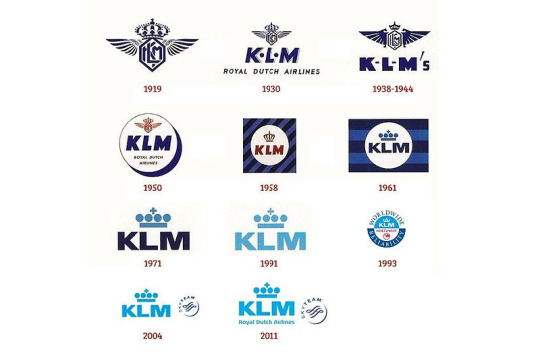
Here is a chart showing the evolution of KLM's iconography over time. I have to say that I was fine with the KLM logo before but now I'm sort of miffed that they ever got rid of the 1930 one. It's by far the best-looking of the bunch and I don't even think it really looks dated. Minimalism is a curse upon the airline industry. I will admit the lighter blue is definitely more distinctive, but I just prefer the darker blue (and I think the 1930 logo would be fine in their new chosen shade).
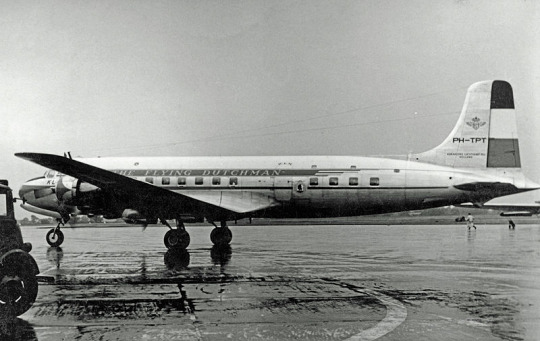
image: RuthAS
Another thing I'm furious left their branding was their very early habit of writing 'THE FLYING DUTCHMAN' on their planes. I had wondered to myself why they don't do that before learning that they used to and later stopped. I am furious that they stopped. It is so obvious, so perfectly created for them, and they let it pass right by. Shame!!!
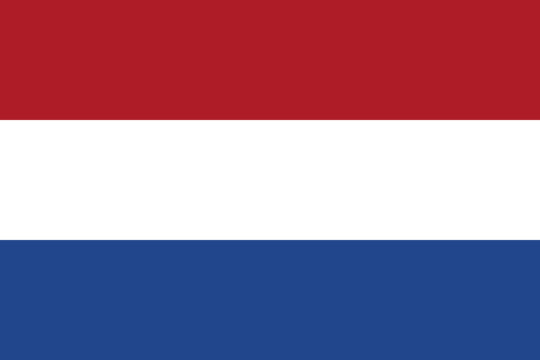
The stripes on the rudder, by the way, are the Dutch tricolor. I do say that I'm more okay with the overdone red-white-and-blue colourscheme when it's done by flag carriers of nations with flags coloured such, but that doesn't mean I'm not relieved that they didn't.

image: RuthAS.
The description of the above photograph on wikimedia mentions that her name was 'Pallas'. KLM names their planes to this day, though there is no one consistent scheme. Airplanes are generally named according to model, but each type gets a different inspiration - these range from birds and insects to city squares and rivers. Here's a list of the names of their planes as of 2015!

As you can see, these early KLM liveries featured cheatlines, one light and one dark blue, a white top half, a bare metal lower half, a painted black radome, and the 'KLM ROYAL DUTCH AIRLINES' name written in obnoxiously small text. This was all very standard for the time. The only really recognizable feature is the striped blue tail (see, condor? Horizontal stripes look so much better). This was their scheme for a very long time. The above image was taken in 1969, right at the end of its lifetime.

This is the same model of airplane wearing a new scheme, taken in 1972. The livery was introduced in 1971 when KLM received their first 747, which wore it.
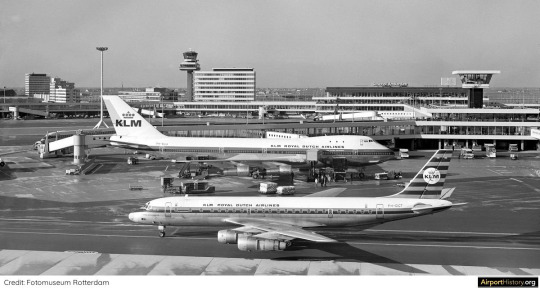
This was the era before Eurowhite caught on, when liveries mostly made up of bare metal were only just beginning to fall out of ubiquity. I'm sure, given the context, and given the size of the 747, this was a startling vision of elegance towering over its surroundings. However, I was born closer to when KLM retired the 747 than when they introduced it, and the world is different now.

I can't deny that even now it looks impressive watching this giant roll on by. It's difficult to see from here, but one of the cheatlines still says 'The Flying Dutchman'. It's difficult to come up with better slogans than the one KLM was given literally for free and has let slip through their grasp for reasons beyond me.

I truly wish I hated this more than I do, but I think as a limited-edition or commemorative livery, or one reserved for the 747s, it would look fantastic. As a brand, I'm not thrilled, but as a variant of the brand, I like it. Keep in mind the 747 was the first wide-body airplane introduced to service and was an order of magnitude larger than anything which had existed previously. These planes are huge by modern standards, but at the time they would have been almost unbelievably gargantuan. I've always thought that while the 747 wears a lot of liveries very well the plane by itself is a bit distractingly goofy-looking, but in white and surrounded by buildings that are shorter than it they have an august grace, quietly elegant, easily charismatic, and never thinking twice about their glorious size.
(It looks pretty bad on the DC-9, though. That's not a plane which really commands awe.)

Even compared to this DC-10, the 747 is massive. But do take note of the DC-10! Around the same time as the white-top livery (I've seen both 1971 and 1972 given as dates of introduction) we saw the introduction of today's blue-top KLM livery! That's right - they did it first, as far as I can tell! Earlier than Korean Air's 1985, and definitely older than Vietnam Airlines' 2002.
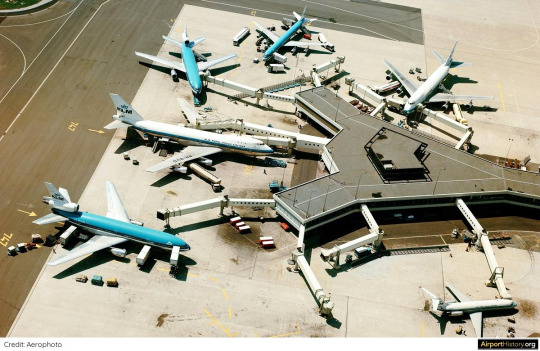
For a few years they operated this fleet of half-white-top, half-blue-top. And then they made the right decision and realized this white livery would lose all its gravitas the moment it stopped being something new and special and clean and splendid that the world had never seen before.
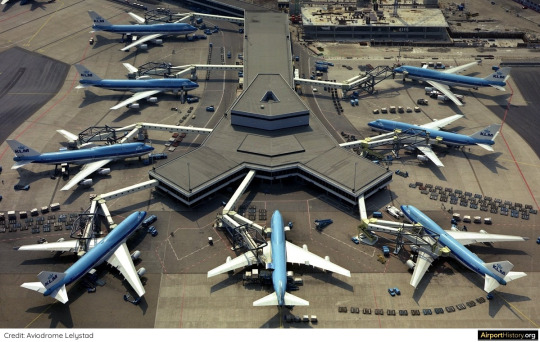
By the close of 1977 this was the KLM livery-full stop.
I actually find this pretty incredible. KLM's livery has changed over the years, and that's what I'm about to talk about, but I wouldn't say it's ever become a different livery - just different takes on the same one. KLM is over 100 years old, and their livery is over 50. Most airlines aren't that old. KLM's livery is over twice as old as Kosovo. That is one hell of a way to stick to a consistent, recognizable brand. I admire that and I wish more airlines would commit instead of jumping between short-lived mediocre liveries.
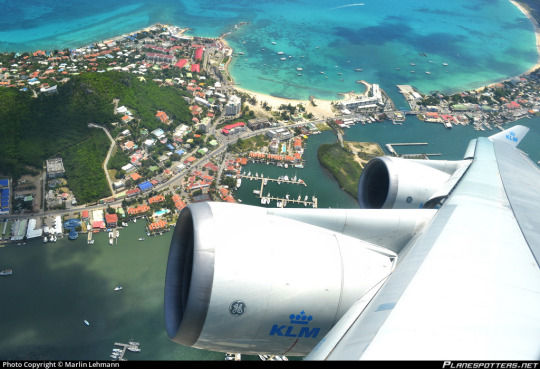
The crown really does set the tone for KLM. It's an airline that carries itself with elegance and refuses to be stingy. These engines are clean, shiny, well-maintained, and wearing their logo. It's all executed so perfectly.

Unfortunately, I do not like their livery. It doesn't look fantastic. This is a rare situation where the 747 actually wears it worse than the more conventional tube-with-a-fin models, but that miniaturized logo replacing the wordmark just looks so tiny and weirdly placed. I hate when airlines just use the same logo twice instead of putting an image logo on the tail and a wordmark on the main body. It instantly lowers my opinion of any livery. Reoccurring elements and a consistent design are one thing and repetition is another; it's the reusing-the-same-shot-in-a-film of airplane livery design. The uninterrupted blue just makes me want to pick up a breeze-block and tear it in two with my hands. Something about the cheatline being placed so high makes me want to take a wooden dowel and beat the nearest wall with it until I have a gaping hole in the wall of my bedroom. Like, it's fine. It's not that bad. But I am going to go chew on a towel until I calm down.

Hey. Don't cry. Air Canada's first A320 delivered wearing scarf and ear warmers ok? I'm doing alright now. And while I was getting done crying KLM apparently came to my same conclusions. I'm not sure exactly when the change was made, but I imagine this livery was phased out sometime in the mid-late 80s or early 90s. It doesn't seem to be instantaneous - rather, the cheatlines have almost bled off over time, and you can find a handful of strange in-betweens.
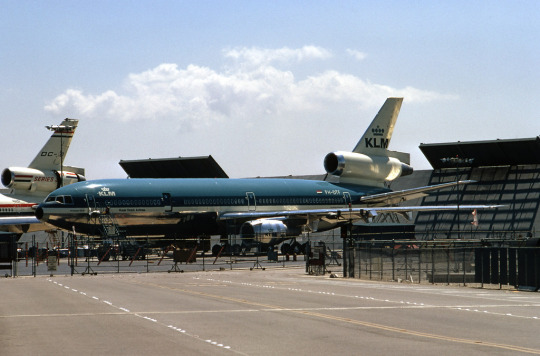
image: Ron Monroe
It wasn't all that bad before. I was being dramatic for a bit. I mean, it looked a lot better on the DC-10, even though it still wasn't exactly fantastic. But it was never, you know, hideous.

While this gay plane may be mistaken for having landed, she is actually in the process of beginning to rotate for take-off.
I like the modernized version a lot more. I love cheatlines, this is widely apparent, but sometimes liveries just look better without them. Cheatline liveries can't really afford to be minimalist - having a big detail like a cheatline makes any attempt at this sort of cleanliness seem quite cluttered and cramped. When the blue is allowed to expand to a proper half of the fuselage it really makes the whole thing feel a lot better proportioned, and I like that they still kept a thin dividing line (though I think it would have been fine if they hadn't, too). All of a sudden this is far from glorious but it at least looks clean. I can say, with confidence, that I think this is acceptable. Not...pretty, maybe. Doesn't fill me with awe. But nothing about it bothers me except the lack of wordmark. I can live with it.

The one thing I feel obliged to point out - and I am far from the first person to say this; it even feels cheap - is that this livery looks like an amount of toothpaste. I am not bothered by this. I am a big fan of oral hygiene. Taking care of your teeth is important! And I do think it's a very nice shade of blue.
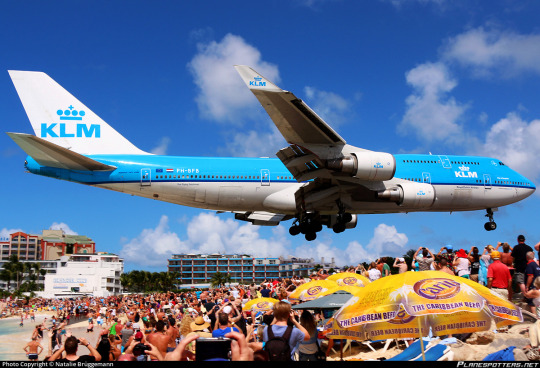
Sure, it may not be the most elegant livery in the world. It's certainly not the most detailed, but it maintains all the iconography necessary at bare minimum. It feels like a revision or evolution of the 1971 livery rather than a new one altogether, and it is impossible to mistake for another airline, and that's my minimum, really - be iconic (in the literal sense), don't be repulsive to look at. Goals met. And the white belly really adds to the whale-like appearance large planes already have, which is always a plus. Maybe it's a form of countershading?
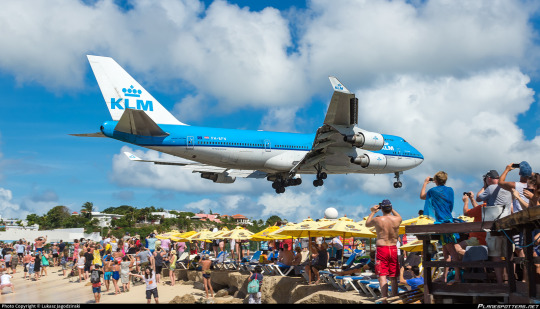
And this would be where the story ends, but in 2014 KLM did a classic airline thing. A bunch of absurdly wealthy individuals sat down in a conference room and decided they were going to make things worse.

Now, 'ruined' is a strong word, and in this case it doesn't apply. The original livery wasn't really good enough to ruin, and the change is very very minor. But I am simply not a fan of this new iteration of the livery.

It just looks sloppy. It doesn't look intentional. It looks like a mistake.

Compare it to Vietnam Airlines, which is in the same blue-and-white-halves category and also features a curved line. I gave this livery an A and one of the reasons for that is that its minimalism is deceptive. Each detail of this livery is very deliberate, and the consistent, smooth angle of the curve, the thickness of the separating line tapering with it - these all work together to create something extremely elegant, despite the fact that if you described these liveries with words alone they might sound quite alike.

There is something so fundamentally sloppy about this localised droop. And it doesn't help that this is KLM, the same airline with those crisp white titans. I don't see what it adds, to create the appearance that your airplane's coat has stretched like an old sock until it doesn't quite fit properly. How far we've come, and how little has changed. But those changes can sometimes be tragic in their simplicity. This small adjustment has disrupted the equilibrium that had me feeling fairly neutral about KLM's livery for so long.
I have to leave it with a D+.
I fought myself for quite some time about this. There's nothing truly offensive about this livery despite the things that make me dislike it, but I just couldn't bump myself up to a C- because, above all else, I'm let down. KLM has the budget, the brand, the acumen - and they had a decent livery, too! One of the most recognizable in the world! It didn't need this change!
A lot of airlines update their livery every decade or two. I wonder if KLM felt pressured not to stagnate, if they were ashamed of keeping their livery the same year after year. But, look...if you're going to be parading the fact that you're sanctioned by the royal family of the Netherlands around you shouldn't be afraid of not looking modern.
And I'm not a fan of monarchies, but not all old things are bad. You don't need to feel pressure to change just because other people are doing it. One of the industry's biggest names shouldn't feel pressured by the trend cycle. You've taken a jacket from a thrift store and cropped it, and it looks worse now. It was fine the way it was. You don't need to touch a classic. It's a bit oversaid, maybe, but...if it's not broken, there's no reason to try and fix it.

#tarmac fashion week#grade: d+#region: europe#region: west/central europe#region: the netherlands#klm royal dutch airlines#era: 1960s#era: 1970s#era: 1980s#era: 1990s#era: 2000s#era: 2010s#era: 2020s#blue side up#flag carriers#double sunrise#air france-klm#requests#long haul
32 notes
·
View notes
Text
Cayman Islands, Cameroon, Canada, and Central African Republic Olympic teams at the Paris 2024 Olympics




#paris 2024 olympics#2024 paris olympics#paris olympics#paris france#2024 olympics#olympics 2024#olympics#opening ceremony#cayman islands#cameroon#canada#central african republic
5 notes
·
View notes
Text
I had this post about crypto and foreign countries in my drafts for a while. Despite how the whole crypto trend played out I think this part is still relevant. People laugh at crypto as cringe, but others use it because central banks are so fucked up and have become weaponized against certain countries. So, it’s the only currency people have control over.
For example, a few years ago, there were sanctions on Iran by the U.S. government. And as with all sanctions it didn’t hurt the government but the average people of Iran. And the Iranian people did not try to overthrow the government of Iran as many who promote sanctions would have hoped. Instead, an Iranian hotel used cryptocurrency to survive and accept payments.
Another example is in the former African colonies of France where they use the Franc, and these countries have no control over their own currency. So, some people in these countries began to use cryptocurrency to regain some form of sovereignty. Despite the crypto boom dying there are legitimate reasons to use them and it all stems back to central banks being inherently fucked up.
#cryptocurrency#iran#crypto#central bank fuckery#central banks#sanctions#african countries#france#former french colonies in africa
3 notes
·
View notes
Text

23 notes
·
View notes